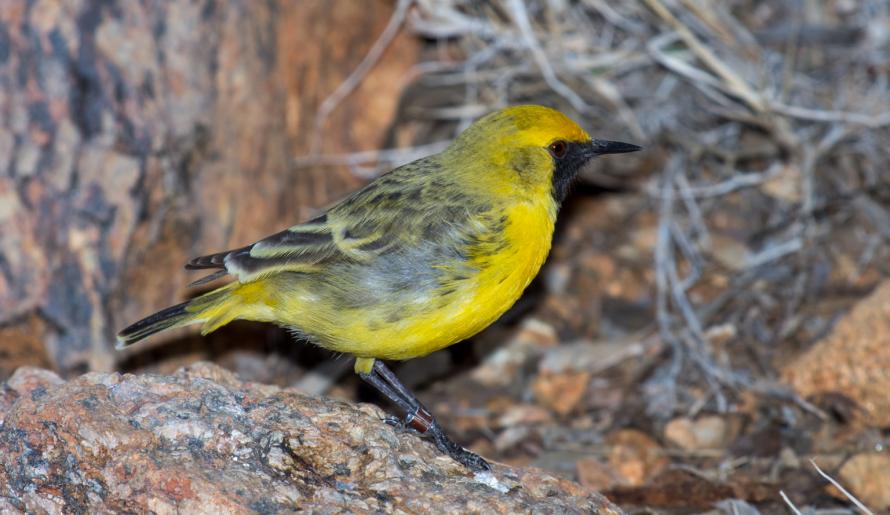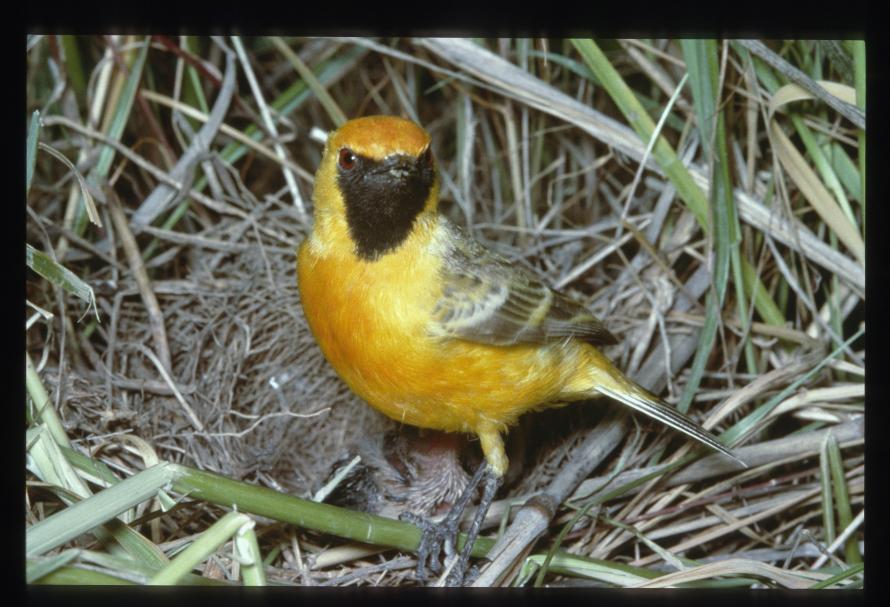

Orange Chat
Epthianura aurifrons
| Details | |
|---|---|
| Type | Bird |
| Group | |
| Biology | They are often seen in pairs or in small groups of up to 15 birds. At the start of the breeding season flocks disperse into pairs. After the pair has formed, the male accompanies the female at all times until the eggs have been laid and chases other birds. |
| Distinctive Markings | Male feathers are a deep warm orange-yellow. The colour is strongest on the crown and breast. Straighter and on average shorter bills, than the Yellow Chat. |
| Taxonomy | |
|---|---|
| Phylum | Chordata |
| Class | Aves |
| Order | Passeriformes |
| Family | Meliphagidae |
| Genus | Epthianura |
| Species | aurifrons |
The Orange Chat is nomadic, and moves around irregularly. During a drought or a dry spell they will be absent.
| Interesting Facts | |
|---|---|
| Diet | Omnivore. Mosty feeds on spiders and small insects, ants, bees, wasps, beetles, caterpillars and grasshoppers. Occasionally eats seeds. |
| Habitat | Found in arid and semi-arid zones, in open grasslands, shrubland and sedgeland. |
| Native Status | Native to Australia |